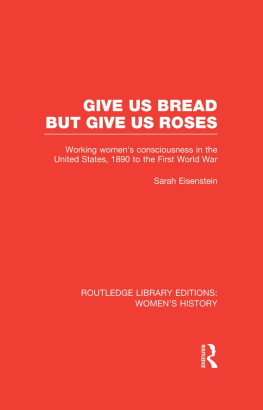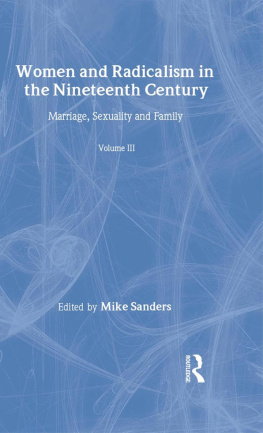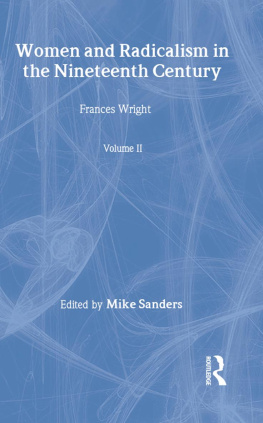First published in 1983
This edition first published in 2013
by Routledge
2 Park Square, Milton Park, Abingdon, Oxon, OX14 4RN
Simultaneously published in the USA and Canada
by Routledge
711 Third Avenue, New York, NY 10017
Routledge is an imprint of the Taylor & Francis Group, an informa business
1983 Harold Benenson
All rights reserved. No part of this book may be reprinted or reproduced or utilised in any form or by any electronic, mechanical, or other means, now known or hereafter invented, including photocopying and recording, or in any information storage or retrieval system, without permission in writing from the publishers.
Trademark notice : Product or corporate names may be trademarks or registered trademarks, and are used only for identification and explanation without intent to infringe.
British Library Cataloguing in Publication Data
A catalogue record for this book is available from the British Library
ISBN: 978-0-415-53409-3 (Set)
eISBN: 978-0-203-10425-5 (Set)
ISBN: 978-0-415-62537-1 (Volume 15)
eISBN: 978-0-203-10351-7 (Volume 15)
Publishers Note
The publisher has gone to great lengths to ensure the quality of this reprint but points out that some imperfections in the original copies may be apparent.
Disclaimer
The publisher has made every effort to trace copyright holders and would welcome correspondence from those they have been unable to trace.
1
Introduction
by Harold Benenson
In the 1890s and after in the United States the still prevalent Victorian conception of respectable womanhood excluded wage-earning women. In contemporary opinion the conditions of female factory labor in particular - the nature of the physical tasks, disregard for proper moral safeguards, and 'low companionship' - barred working-class women from attaining a truly feminine standard of social conduct. Yet wage-earning women themselves did not acquiesce in this judgment. Nor did they passively accept the harsh conditions which they confronted in unsafe factories and tenements. Their response to conservative social ideologies, and to their employment experience in the context of changing family relationships, was varied and complex. An analysis of the character and dynamics of this response has fundamental importance for social theories of women's consciousness.
It is this problem - the formation of consciousness among wage-earning women in a period of industrialization and expansion of women's employment (1890-1920) - which Sarah Eisenstein explores in Give us Bread but Give us Roses: working women's consciousness in the United States, 1890 to the First World War. Sarah Eisenstein began her research in 1969. In addition to using published sources, she combed organizational and personal archival collections that touched various aspects of the subject. These included materials on 'working girls' clubs and settlement house programs in the papers of Grace Dodge, the National Federation of Settlements, Hull House and other individual settlement houses, Sarah Eisenstein proceeded on the basis of certain key assumptions: first, that the analysis of social consciousness could gain profoundly from the study of working-class women. And second, that major social changes, and the rise of female labor organization, and radical and feminist movements, in the pre-First World War era necessarily called into question elements of the existing sexual ideology. This period provided uniquely favorable conditions for the partial rejection of this ideology and assertion of an incipient group consciousness on the part of working women. The full plan of writing, generated by this research and initial perspective, was never completed because of Sarah Eisenstein's death in 1978. The essays which were left in final or draft form are collected in Give us Bread but Give us Roses. They are primarily concerned with describing working women's actual consciousness. But the following chapters also propose a specific approach to theoretical issues concerning the interaction between sexual and class cultures, dominant ideology and subordinate group experience, and industrialization and women's position in pre-industrial family and community environments.
Give us Bread but Give us Roses reconstructs the attitudes of a pioneer generation of young working women toward the conflicts engendered by their new experience of employment outside the home. These women were part of a female labor force of unprecedented size in the factories and stores of New York City, Philadelphia, Boston, Chicago and other cities. Those employed in the manufacturing industries of these centers were mainly, though not exclusively, of immigrant Jewish and Italian background.thirty thousand shirtwaist makers (1909-10) and forged the first permanent labor organizations among women workers in the United States, in the garment trades. They were also affected by feminist political campaigns, supported by a broad range of middle-class women, and by socialist and syndicalist labor agitation.
These essays give expression to the rudimentary critique of degrading conditions of labor which working women articulated, and their claim to a womanly identity in the face of derogatory judgments to the contrary. In tracing the impact of changing work and family experience, sexual ideology and new conditions of women's self-awareness, the study develops a dialectical conception of the influences which shaped working women's consciousness. In two areas in particular, the relation of dominant to subordinate class cultures and the effects of industrialization on working women, Give us Bread but Give us Roses charts well-conceived lines of interpretation that avoid one-sided emphasis.
Regarding the first problem, the study examines the points of intersection and tension between a late Victorian, middleclass ideal of womanhood, and the actual experience and cultural background of working-class women. The restrictions of the Victorian ideal condemned the latter group to an unwomanly status. At the same time, working-class women were powerfully drawn to the image of marriage and home that originated in this same Victorian concept of sexual propriety preserved in woman's separate 'sphere.' Give us Bread hut Give us Roses (and in particular) views this cultural domain as an arena of conflict, uneasy accommodation and especially, of 'negotiated response' on the part of working women to both dominant and critical feminist or working-class ideologies, in light of their own distinct experience. Working women's attitudes did not simply reflect either the dominant Victorian or alternative ideologies. Rather, they grew out of the women's active response both to new conditions of work and working-class life, and to the ideas which were available to them.
This approach avoids the simplifications of two popular historical treatments: the first, which focuses on the survival of the working-class family unit (and its centrality for women), An opposing, equally one-sided emphasis is found in the many studies of nineteenth-century Victorian ideology of 'woman's sphere' which imply that this dominant mode of thought was the one operative cultural force affecting women of all classes. Unlike these historical approaches, the perspective of the present work permits a complex analysis of the relationships between dominant social ideology, and subordinate group experience and consciousness in the situation of working-class women.






